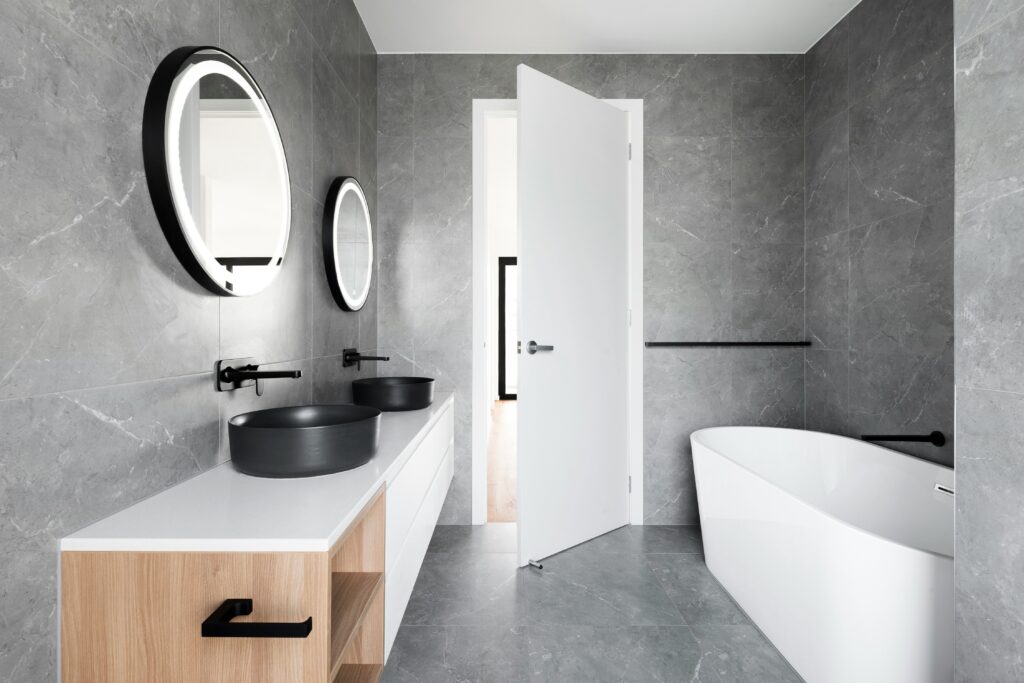Creating a bathroom that is both functional and aesthetically pleasing requires attention to detail and careful planning. Before diving into your renovation project, consider these eight crucial aspects to ensure your bathroom meets your needs and preferences.

1. Ventilation is crucial
Proper ventilation is paramount in a bathroom to prevent condensation, mold growth, and paint peeling. If you’re unsure about the best ventilation system for your space, whether it be a window, mechanical extractor, or natural draft system, consulting an expert is advisable. Black spots on walls or caulking often indicate inadequate ventilation, highlighting the importance of this aspect.
2. Heating options
When adding a radiator to your bathroom, you might need to upgrade your central heating system or opt for a more powerful boiler. An electric towel warmer is an alternative that also serves as a radiator. Choose a device that complies with current electrical safety standards to ensure a warm and comfortable environment.
3. Plumbing condition
If you’re keeping old pipes, make sure they are in good condition, free from leaks or dampness, and capable of handling the drainage requirements of a shower or bathtub, which typically means a minimum diameter of 40 mm.
4. Water supply
Ensure your water pressure is sufficient to support a decent shower flow. A weak water stream can significantly detract from the daily shower experience.
5. Wall and partition strength
The walls and partitions in your bathroom must be sturdy enough to support the weight of various fixtures and fittings, such as furniture, shower trays and cabins, water heaters, toilets, and bidets. Pay attention to the structural integrity of your walls.
6. Wall coverings
Wall coverings in the bathroom act as the first line of defense against moisture penetration. For areas prone to splashes, such as near sinks and bathtubs, consider using tiles with carefully sealed joints, especially on walls surrounding baths and showers, up to a height of at least two meters. Applying a waterproofing agent before tiling can prevent moisture from seeping into walls and partitions, facilitating easier cleaning and maintenance.
7. Sealant effectiveness
Pay close attention to the caulking in areas prone to water infiltration, such as shower corners, vertical and horizontal joints between floors and walls, and around sanitary fixtures. Ensure that the sealant is not peeling or damaged, and address any issues promptly. Ideally, use a fungicidal sealant to prevent mold growth.
8. Flooring durability
The floor must be robust enough to bear significant weight, like a fully filled bathtub, which can weigh between 150 and 200 kg. Additionally, the flooring should be waterproof. If you have exposed flooring or parquet, it must be treated with a varnishing product to withstand the humid environment of a bathroom.
By taking these eight key points into account, you can create a bathroom that is not only a pleasure to use but also safe and durable. From ensuring proper ventilation and heating to selecting the right materials and ensuring all installations are up to standard, each element plays a vital role in the overall functionality and appeal of your bathroom. Remember, a well-planned bathroom renovation not only enhances your daily routine but also adds value to your home.

 Open Immovlan
Open Immovlan